Country guides

Things to do in Germany
Germany remains one of the world's top sightseeing destinations by virtue of its unique and important historical attractions, charming medieval buildings, beautiful landscape and legendary cultural events. The country has played a leading role in world history and many of its sightseeing attractions - commemorating the celebrated to the infamous - are connected to this storied legacy.
The major cities such as Berlin, Munich and Frankfurt are attractions in themselves, each jam-packed with historical treasures and sites of interest. Dachau and Checkpoint Charlie are remnants of more tragic periods, while the magnificent Rhineland and Garmisch-Partenkirchen regions offer enough natural splendour to please even the most demanding outdoor enthusiasts. Munich is home to one of the world's biggest parties, the legendary Oktoberfest, while the Romantic Road between Berlin and Frankfurt is a self-drive tourist classic that never fails to delight with its perfectly preserved old towns and villages.
Germany is certainly a year-round destination, although tourists should be warned that the European winters (December to February) can get bitterly cold. The best way to travel around the country is by train as the network is comprehensive, reliable and safe, and decent value for money. Another good option is to rent a car and drive between attractions on the extensive network of autobahn freeways.
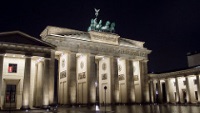
Brandenburg Gate
The impressive and symbolic Brandenburg Gate was built with sandstone in 1791 and consists of 12 massive Doric columns. Topped with a stunning statue of the Goddess of Victory faci…
Brandenburg Gate
The impressive and symbolic Brandenburg Gate was built with sandstone in 1791 and consists of 12 massive Doric columns. Topped with a stunning statue of the Goddess of Victory facing east towards the city centre, the gate is closed to traffic, as is the adjacent Pariser Platz, a square at the end of the beautiful Unter den Linden Boulevard. Since the fall of the Berlin Wall, new buildings have been built to designs closely following those destroyed in WWII. It's easy and worthwhile to hire a guide for the area, as the Brandenburg Gate has an intriguing history and a special place in the German culture.
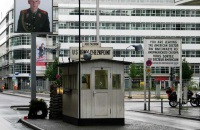
Checkpoint Charlie
The infamous border crossing point in the Berlin Wall dividing West and East Berlin has now become something of a shrine, with the addition of a museum: the Checkpoint Charlie Muse…
Checkpoint Charlie
The infamous border crossing point in the Berlin Wall dividing West and East Berlin has now become something of a shrine, with the addition of a museum: the Checkpoint Charlie Museum. While the original metal shed is now on display at the Allied Museum, the soldier's post can be visited and tourists can be photographed under the border sign. The museum's permanent exhibition charts the lifespan of the wall, displays objects used to get under, over or through the wall, as well as the stories of those defectors who risked their lives to win their freedom. It hosts lectures and film screenings, and also houses temporary exhibits focusing on general human rights.
Website www.mauermuseum.de
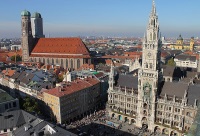
Marienplatz
The Marienplatz is the heart of Munich and the site of its most important historic buildings. The square is dominated by the Gothic Revival Town Hall featuring its famous glockensp…
Marienplatz
The Marienplatz is the heart of Munich and the site of its most important historic buildings. The square is dominated by the Gothic Revival Town Hall featuring its famous glockenspiel, both built in the 19th century. The glockenspiel delights visitors when its 43 bells chime daily at 11am, 12pm and 5pm, accompanied by moving figures displaying vignettes from Munich's history. The centre of the square features a statue of the Virgin Mary, while visitors can also explore a toy museum and the Frauenkirche, Munich's cathedral dating from the 15th century. The square is full of great shops and pleasant outdoor eating areas to relax and refuel.
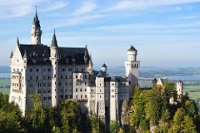
Neuschwanstein Castle
Neuschwanstein Castle was built by Mad King Ludwig II and has become a Bavarian trademark, with its pale Gothic facade rising from a green hill. Day tours from Munich travel to the…
Neuschwanstein Castle
Neuschwanstein Castle was built by Mad King Ludwig II and has become a Bavarian trademark, with its pale Gothic facade rising from a green hill. Day tours from Munich travel to the castle and visitors also drive from Garmisch. From the parking lot there is a steep half-mile (1km) climb to the fairytale fortress, with indulgent guests preferring a horse-drawn carriage ride to the gates. The interior is extravagant, particularly the king's apartments, which are decorated entirely with hand-embroidered silk, carvings and elaborate wall and ceiling paintings. The rooms can only be visited as part of a guided tour and no photography or filming is allowed in the castle.
Website www.neuschwanstein.com
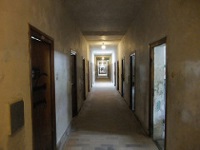
Dachau Memorial Site
Dachau is the site of the first notorious Nazi death camp, where thousands were imprisoned, starved and killed between 1933 and 1945. The camp has now been turned into a museum, co…
Dachau Memorial Site
Dachau is the site of the first notorious Nazi death camp, where thousands were imprisoned, starved and killed between 1933 and 1945. The camp has now been turned into a museum, containing three memorial chapels. The main camp road still exists, lined with poplar trees. But only two of the original 32 barracks remain, having been rebuilt to illustrate the horrific conditions. The original kitchen, laundry and shower block now contains exhibits, photographs and documents depicting the persecution of Jews and other enemies of the Third Reich. The exhibitions are often personal and include the accounts and stories of prisoners. The memorial is a sobering, sombre experience and may not be suitable for young children.
Website www.kz-gedenkstaette-dachau.de
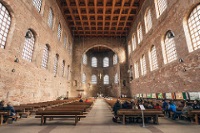
Trier
Tourists are drawn to Germany's oldest city of Trier for a taste of ancient Rome. Founded as a colonial capital under Emperor Augustus in 16 BC, the city became an important politi…
Trier
Tourists are drawn to Germany's oldest city of Trier for a taste of ancient Rome. Founded as a colonial capital under Emperor Augustus in 16 BC, the city became an important political and cultural centre, and many Roman buildings and monuments remain to be explored by visitors.
The city has at least five UNESCO World Heritage Sites: St Peter's Cathedral, a remarkable 11th-century church holding several significant tombs; The Black Gate, dating back to around 180 AD; 2,000-year-old ruins of an Imperial Roman bath complex once frequented by Constantine; the Church of Our Lady, another beautiful church adjacent to the cathedral; and the Amphitheatre, dating back to the 2nd century.
Nearby, the Mosel Valley is Germany's main wine region and is filled with vineyards and cellars that will delight connoisseurs. Many visitors love to embark on cruises down the scenic Mosel River.
Website www.trier.de
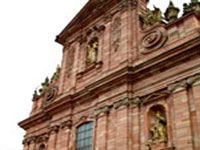
Heidelberg
The historic university town of Heidelberg is a city of music and romance along the Neckar River. One of the few German cities that escaped relatively unscathed from World War II, …
Heidelberg
The historic university town of Heidelberg is a city of music and romance along the Neckar River. One of the few German cities that escaped relatively unscathed from World War II, it boasts numerous Medieval and Renaissance buildings, including some beautiful historical churches and university structures from 1386. A good way to enjoy scenic views of Heidelberg is along the Philosopher's Walk, a path alongside the Heiligenberg. A vibrant atmosphere permeates Heidelberg, particularly in the student quarter with its narrow streets and lively pubs. The weather in Heidelberg is famously sunny and warm compared to much of Germany, and this is a major draw for the millions of tourists who visit each year.
Website www.heidelberg.de
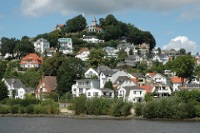
Blankenese
The quaint and affluent town of Blankenese sits upon the banks of the Elbe River, and is adored for its pre-war villas, gorgeous hotels and stunning views. Visitors can explore nar…
Blankenese
The quaint and affluent town of Blankenese sits upon the banks of the Elbe River, and is adored for its pre-war villas, gorgeous hotels and stunning views. Visitors can explore narrow alleys between picturesque houses, enjoying an abundance of cafes and restaurants from where patrons can gaze down at the ships cruising in and out of the harbour. Pedestrian streets and nearly 5,000 stairs crisscross the charming hillside, while there is also a Roman garden, two lighthouses and more than half a dozen peaceful parks and walking trails.
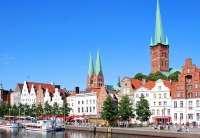
Lübeck
Not only was Lübeck home to Nobel Prize winners Willy Brandt and Thomas Mann, it's also a living monument to the wealthy Hanseatic merchants of the 13th century. A UNESCO World He…
Lübeck
Not only was Lübeck home to Nobel Prize winners Willy Brandt and Thomas Mann, it's also a living monument to the wealthy Hanseatic merchants of the 13th century. A UNESCO World Heritage Site, Lübeck's architecture consists of steeples, spires and high-gabled houses, strong towers, massive gates and a lovely Old Town. The town is also popular for its marzipan, with locals adamant that their hometown is where the delightful confection was first devised. Samples are freely available in Lübeck, along with the tastes of the region's fine wines. There are also some great cafes and restaurants to enjoy in this beautiful town, which feels quite unlike any other.
Website www.luebeck-tourism.de
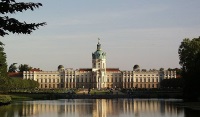
Charlottenburg Palace
Schloss Charlottenburg is the largest and oldest palace in Berlin. The 18th-century Baroque structure was originally constructed as the summer home for Sophie Charlotte, the wife o…
Charlottenburg Palace
Schloss Charlottenburg is the largest and oldest palace in Berlin. The 18th-century Baroque structure was originally constructed as the summer home for Sophie Charlotte, the wife of Elector Frederick III who became the first Prussian king. The splendid interiors are festooned with masterpieces of art, including the largest collection of 18th-century French paintings anywhere outside of France. The surrounding gardens contain a mausoleum, pavilion and the Belvedere, which houses the porcelain museum. For centuries the best artists, architects and landscapers were commissioned to improve and enrich the palace, and the gardens are also lovely.
Website www.spsg.de
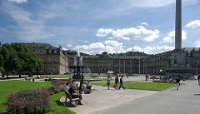
Palace Square (Schlossplatz)
The Palace Square is the symbolic heart of Stuttgart, and is set against the backdrop of the beautiful Baroque New Palace. Once the residence of kings, it was built between 1746 an…
Palace Square (Schlossplatz)
The Palace Square is the symbolic heart of Stuttgart, and is set against the backdrop of the beautiful Baroque New Palace. Once the residence of kings, it was built between 1746 and 1806 and is now a base for the state government. If the New Palace feels a bit French it's because the Duke Carl Eugen of Wurttemberg wanted to create a Versailles in Stuttgart. The striking König Wilhelm Jubilee Column was erected in 1841 to honour King Wilhelm's silver jubilee, while the statue of Concordia, the Roman goddess of harmony, was added in 1863. The two fountains were built at the same time, with the eight cherubs each representing one of Wurttemberg's rivers. It's possible to catch the hop-on hop-off tour bus from the square, which is a popular starting point for explorations of the city.
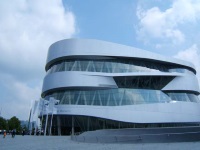
Mercedes-Benz Museum
The impressive Mercedes-Benz Museum is housed in a slick, contemporary building, an icon of modern architecture. With an exhibition space filling seven storeys, it takes visitors o…
Mercedes-Benz Museum
The impressive Mercedes-Benz Museum is housed in a slick, contemporary building, an icon of modern architecture. With an exhibition space filling seven storeys, it takes visitors on a chronological journey through the history of the Mercedes automobile; combining world events occurring at the same time as Karl Benz's breakthroughs and displaying more than 160 different vehicles, from racers and concept cars to aircraft engines and the popemobile. Automobile aficionados will be in heaven but even non-petrolheads will be intrigued. Visitors take the elevator to the top of the building and then wind their way down chronologically on a spiral until they reach the ground and the present day.
Website www.mercedes-benz-classic.com
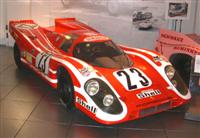
Porsche Museum
The Porsche Museum in Stuttgart covers more than 75 years of Porsche engineering and memorabilia. Extremely popular with petrolheads, it also interests those not obsessed with cars…
Porsche Museum
The Porsche Museum in Stuttgart covers more than 75 years of Porsche engineering and memorabilia. Extremely popular with petrolheads, it also interests those not obsessed with cars as there are loads of entertaining and informative exhibits and designs. The Porsche Museum, which has become a city landmark, displays all the historical and contemporary knowledge about the Porsche brand as well as housing a collection of about 80 cars as well as a number of smaller exhibits. They also put up regular special exhibitions and visitors can check for details on these temporary treats on their website.
Website www.porsche.com/international/aboutporsche/porschemuseum
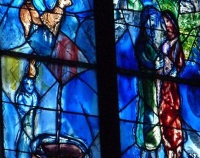
Mainz
The capital of the Rhineland, Mainz is a bustling city with a curious but exciting mixture of medieval architecture and gleaming office blocks. The city is over 2,000 years old and…
Mainz
The capital of the Rhineland, Mainz is a bustling city with a curious but exciting mixture of medieval architecture and gleaming office blocks. The city is over 2,000 years old and mixes the old and the new with alacrity. The Dom und Diözesanmuseum dominates the skyline in the centre of town, and St Stephen's Church, with its original Chagall stained-glass windows, is a popular attraction in the Old Town. History lovers will also relish the Schillerplatz square. The city is compact enough to enjoy walking tours around town or along the Rhine, with the Kaiserstraße boasting an attractive pedestrian boulevard and church.
Mainz is the birthplace of Johannes Gutenberg, inventor of the printing press, making books a popular souvenir from the city. The museum dedicated to Gutenberg is a highlight for those interested in the revolution sparked by the printed word. The museum includes a working replica of Gutenberg's printing press and is housed in a beautiful old building.
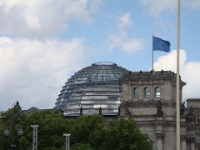
Reichstag
The Reichstag is one of Berlin's most famous buildings and the seat of Germany's parliament since 1894. Enduring a volatile history, its 1999 renovation saw the building gutted, le…
Reichstag
The Reichstag is one of Berlin's most famous buildings and the seat of Germany's parliament since 1894. Enduring a volatile history, its 1999 renovation saw the building gutted, leaving only the facade and the addition of a glass-domed atrium that provides stunning panoramas of Berlin. Tours are on offer but visits are done by contacting the Reichstag beforehand. Although the office is helpful there are thousands of people making this request so advance planning is required to avoid disappointment. Free audio is available in a number of languages.
Website www.bundestag.de/kulturundgeschichte/architektur/reichstag
The Fairy Tale Road
The German Fairy Tale Road follows a meandering 370-mile (595km) route through charming villages and gingerbread houses, lush forests and well-preserved medieval towns. It traces t…
The Fairy Tale Road
The German Fairy Tale Road follows a meandering 370-mile (595km) route through charming villages and gingerbread houses, lush forests and well-preserved medieval towns. It traces the path of the Brothers Grimm, famous storytellers who collected the folktales that inspired characters such as Sleeping Beauty, Little Red Riding Hood, and Hansel and Gretel.
Starting in their birthplace of Hanau, visitors explore attractions such as the Brothers Grimm National Monument in the town square, the Puppet Museum at Williamsbad, the Marienkirche and the Philippsruhe Palace. Further on, the town of Kassel is home to the Brothers Grimm Museum. From there, it's on to Hameln, the famous town of the Pied Piper, and the Fairy Tale Museum in nearby Bad Oeynhausen. The road ends in the town of Bremen, home of both the mythical Little Nienburg Girl and the very real Rathaus, a vibrant marketplace filled with town musicians and the famous Ratskeller Restaurant.
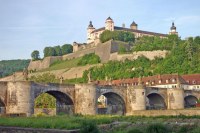
Würzburg
A popular starting point for the Romantic Road, Würzburg is nestled in a picturesque location in the heart of the Franconian wine region of rolling hills, pretty vineyards. Famous…
Würzburg
A popular starting point for the Romantic Road, Würzburg is nestled in a picturesque location in the heart of the Franconian wine region of rolling hills, pretty vineyards. Famous for its 100 churches and the Residential Palace, the city's architecture is composed heavily of baroque and rococo pieces and are best viewed from the Alte Mainbrucke, an old pedestrian bridge. The 12th-century Marienburg Fortress sports lovely gardens and a museum, and travellers adore the Würzburger Cathedral, one of the largest Romanesque churches in Germany. Würzburg is far from quiet and sleepy, as its student population maintains a vibrant nightlife, and colourful wine festivals add to the appeal.
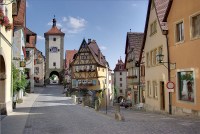
Rothenburg
Known as the best-preserved medieval town in Germany, Rothenburg is an absolute must see for anyone travelling on the Romantic Road. The 13th-century fortified walls are undamaged,…
Rothenburg
Known as the best-preserved medieval town in Germany, Rothenburg is an absolute must see for anyone travelling on the Romantic Road. The 13th-century fortified walls are undamaged, encircling a quaint city centre with a number of charming buildings and fascinating museums. Enjoying stunning views from the top of the Town Hall tower or exploring the old walls are great ways to gauge the look and feel of this fairytale cityscape. The Medieval Crime Museum is a popular excursion with visitors, while the Lutheran church of St Jakob is also a must for those interested in medieval art and architecture, its wood carvings and stained-glass windows dating back to the 14th century. After a day out on the ramparts, the town's walled garden is a lovely place to stroll, relax or picnic.


